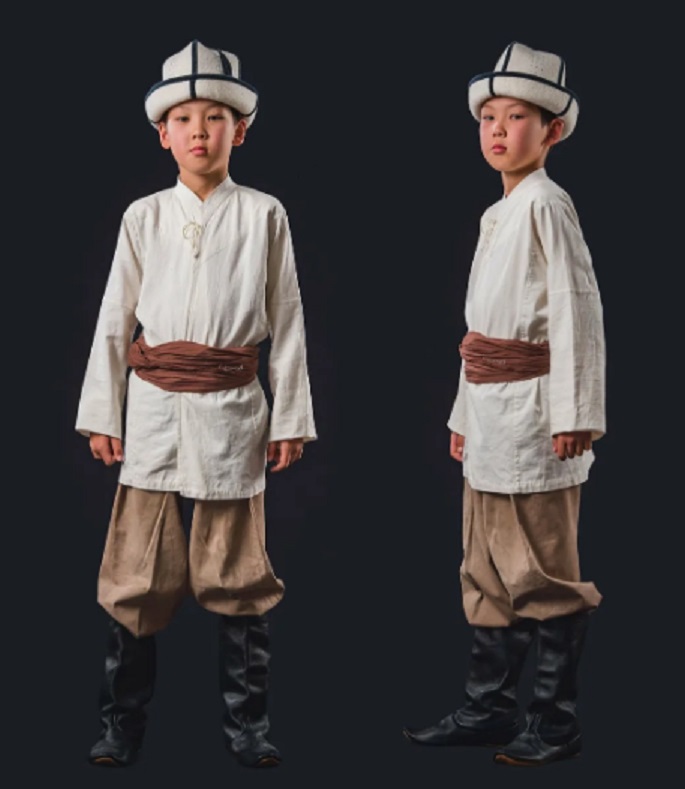
In the 19th century, especially in its second half, carpet weaving in southern Kyrgyzstan was widespread and was entirely in the hands of women. Originating from the needs of nomadic life, carpet weaving among the Kyrgyz initially developed in conditions of semi-subsistence farming, characterized as home production intended to meet the needs of individual families. However, even at that time, carpet products were mainly acquired by the upper class of society—the Kyrgyz nobility.
The development of Kyrgyz carpet weaving was closely linked to its development in Fergana and other carpet centers of Central Asia, where carpets had been produced specifically for sale for many hundreds of years. With the penetration of capitalist relations, Kyrgyz carpets also began to enter the market. In the late 19th and early 20th centuries, when there was particularly lively trade in carpets in the markets of Fergana cities, the Kyrgyz began to prepare carpets for the purpose of selling them. Thus, the production of this type of product began to transform into a craft. At the same time, clear entrepreneurs emerged among the Kyrgyz, who understood the profitability of carpet production. These were predominantly representatives of the wealthy class. Middlemen soon appeared to assist them, including Tatars and Armenians.
A former laborer of the wealthy Asan-minbashi ("Min-bashi" means thousand; literal translation: "min"—thousand, "bash"—head) Joro Tashtanov (born in 1877, collective farm "Dzhapalak," Osh region) recalls how the owner gathered 8-10 women who worked on making carpets without straightening their backs, among whom were also the younger wives of the wealthy.
According to Joro Tashtanov's calculations, there were 17 wealthy individuals in the Dzhapalak area who made large sums of money from carpet weaving. An employee of this collective farm, Satymbay Ishiyev (born in 1887), recounted how he was astonished when, having been brought for non-payment of taxes to the house of the wealthy Absaturoz-kazy and then to another wealthy individual, Karavay-minbashi, he saw the decoration of the rooms: the walls and floors were completely draped and covered with beautiful Kyrgyz carpets.
The exploitation of labor was based on the ancient folk custom of mutual assistance ("ashar"). The invited workers were only fed, while the payment for their strenuous labor in making carpets, based on primitive techniques, was minimal.
By the order of the khan's nobles, artisans were often gathered to make carpets for the khan's court. According to informants, a particularly large carpet enterprise was run by the wealthy Solton. His wife, Alima, gathered women who worked on the production of large carpets. Among them, there was a complete division of labor. Some women wove carpets while sitting at looms, others prepared wool (spinning, dyeing), and several women prepared food for the working group in specially set up cauldrons.
Kyrgyz craftswomen also made carpets by order of wealthy Kyrgyz. In this case, the customer provided them with raw materials.
It was common in Southern Kyrgyzstan to present a carpet as a gift (tartuu) to prominent individuals. According to informants, the wealthy Gapar Rakhmatov (village of Batken) accumulated a colossal number of carpets in this way.
The Kyrgyz engaged in carpet production during the summer months. In the autumn, they were transported to the markets of the cities of Uzbekistan (Andijan, Margilan, Kokand, Skobeleva). A large quantity of carpets came here not only from local sources but also from Eastern Turkestan, Transcaspia, and Northern Afghanistan, which undoubtedly "contributed to the penetration of new compositional forms into local production and the creation of new unique samples of carpet products." According to all informants, the main consumers of Kyrgyz carpets were Uzbeks and Tajiks.
According to A. A. Semenov, they did not have particular success among Europeans. "I have repeatedly seen in Andijan at the market," he writes, "how the usual buyers of these carpets were almost always local natives." It is noted that the quality of Kyrgyz carpets is high and relatively inexpensive. They were purchased by both local Kyrgyz and those coming from the northern and central regions of Kyrgyzstan. However, in such cases, trade usually took the form of barter for livestock.













































